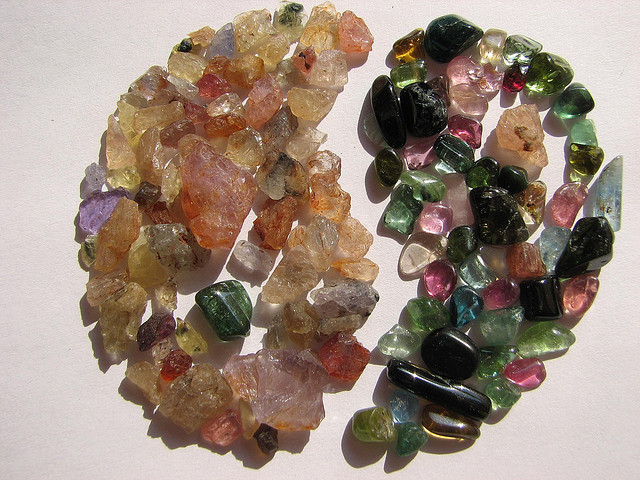Conflicting Gemology Terms and Definitions
No one to date has a total inventory, or a complete database, of gems and all their properties. Gemologists need to be cautious about relying on any one data source.
2 Minute Read
Some members have questioned the parts of our gemology test that differ from their Gemological Institute of America (GIA) references. We have the greatest respect for the GIA. No organization has done more for advancing knowledge and raising standards of professionalism in gemology. They are also continuing their contributions to gemology with their excellent laboratory and publications.
While we have the utmost respect for the GIA, they are not the final word on all things gem related. Over 1,000 minerals have been fashioned as gems, but the GIA only teaches about the 100 or so that are most likely to appear in jewelry. That leaves us with a real world situation of people owning gems that the majority of Graduate Gemologists are unable to identify. There is an additional problem that many textbooks offer conflicting information. One must realize that gemology is still a young science. Books from the 1950's will show a narrower range of values for a particular gem than those printed in this century. That is because more gems, with a larger range of values, have been tested during the ensuing time period. One must also realize that there are dozens of laboratories doing gemological research. It is entirely possible for the Universities at Frankfurt and Berkeley to disagree on what the extremes of RI or SG are for a given gem, simply because they have tested different samples. No one to date has a total inventory, or a complete database, of gems and all their properties. It is the position of the International Gem Society that a professional gemologist should have as broad and thorough an education as possible. To this end, we research as many sources as possible and bring you the latest and most accurate information available. Here are some questions from our gemology test that are most often missed.
Question:
You are examining a gem and fine it has a density of 2.90. Can it be tourmaline?…Yes…No
Correct answer: Yes
Most textbooks list tourmaline as having a specific gravity range of 3.00 to 3.26, (with subtle variations.) The "Color Encyclopedia of Gems" by Dr. Joel Arem lists Elbite as having a low SG of 2.84 and schorl 2.82. The GIA has also reported a relatively new find of tourmaline with inclusions that have brought their specific gravity below 3.0. One needs to be aware that a specific gravity reading of less than three does not guarantee the mineral is something other than tourmaline.
Question:
Color change is defined as the difference between what is seen in incandescent and fluorescent light….True…False
Correct answer: False.
The GIA defines color change as "a distinct difference between a gem's body color in incandescent light and its color in daylight or fluorescent light." Historically, color change was first noted when bringing gems in from outside. The lighting was some type of flame, as observation of this phenomenon predates electricity by several centuries. The recent definition that includes the words "in daylight or fluorescent light" is a source of trouble. Natural and fluorescent lights have different characteristics. With some stones you can see a color change with natural light and not from fluorescent. Several gemologists do their color change testing with two electric lights. With this procedure you will miss a significant number of color changes. I can relate several occasions of alexandrites being identified as common chrysoberyl and other less common gems being misidentified. Needless to say, this has been a source of great contention. There really is no excuse for incorrectly identifying a gem. One must use daylight for your comparisons if you want to properly identify all gems.
International Gem Society
Related Articles
Ruby-Glass Composites vs Leaded Glass Clarity Enhancements
Buying Gems: Test Your Identification Skills
Distinguishing Common Jade Lookalikes
How to Modify a Powder Scale for Specific Gravity Testing
Latest Articles
800 Years of Mogok: A Celebration in Tenuous Times
What is the Average Gemstone Faceting Yield?
Pyroxmangite Value, Price, and Jewelry Information
How to Identify Emerald Simulants and Synthetics
Never Stop Learning
When you join the IGS community, you get trusted diamond & gemstone information when you need it.
Get Gemology Insights
Get started with the International Gem Society’s free guide to gemstone identification. Join our weekly newsletter & get a free copy of the Gem ID Checklist!
